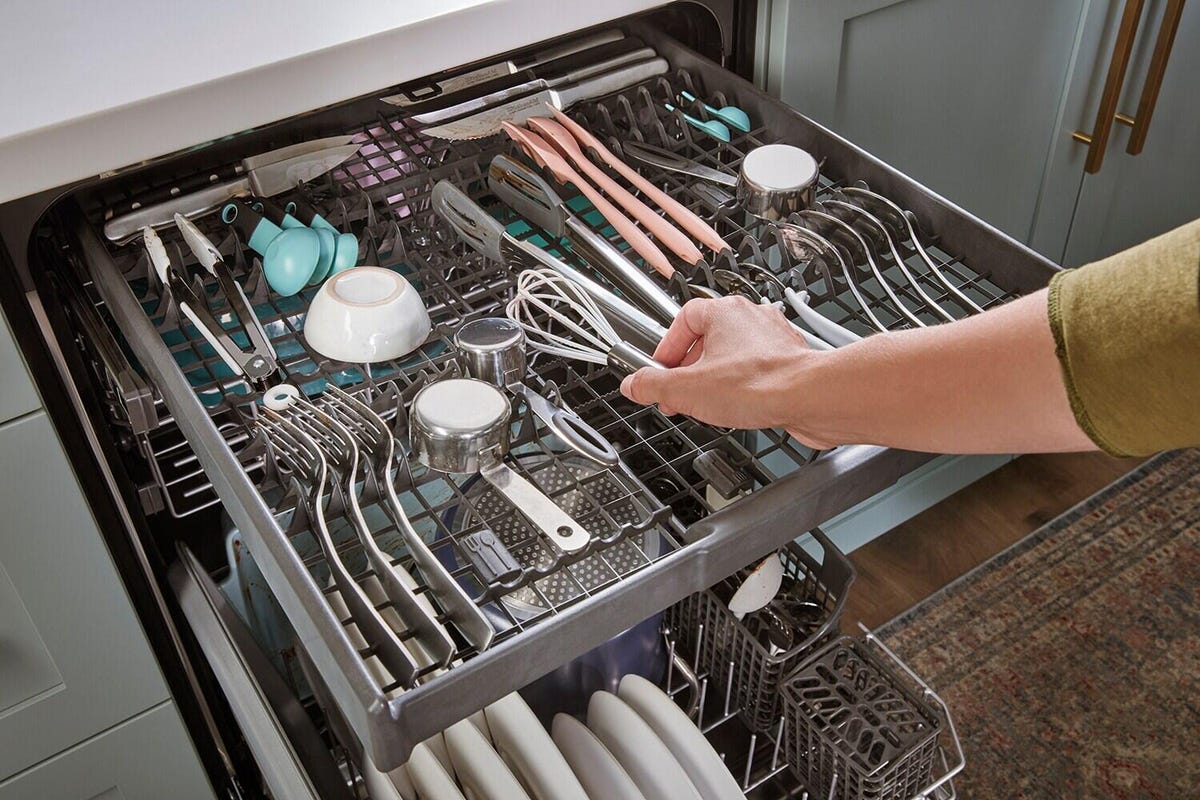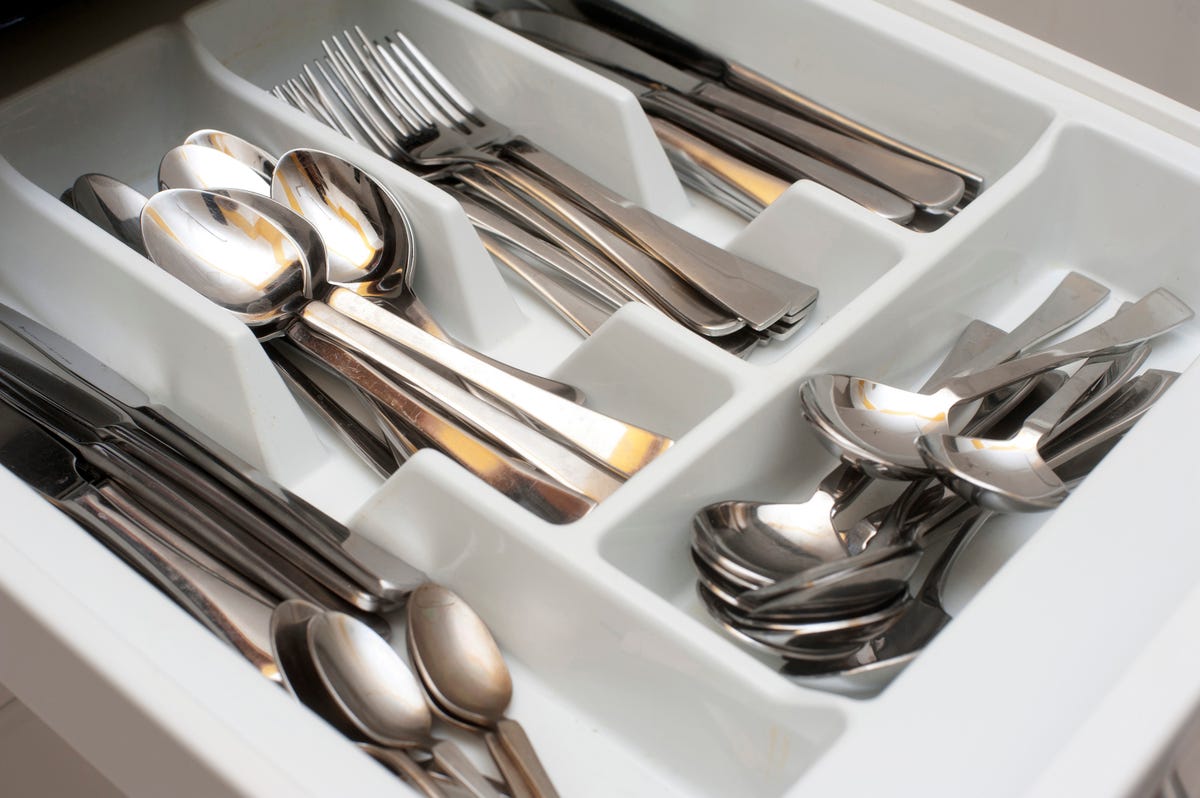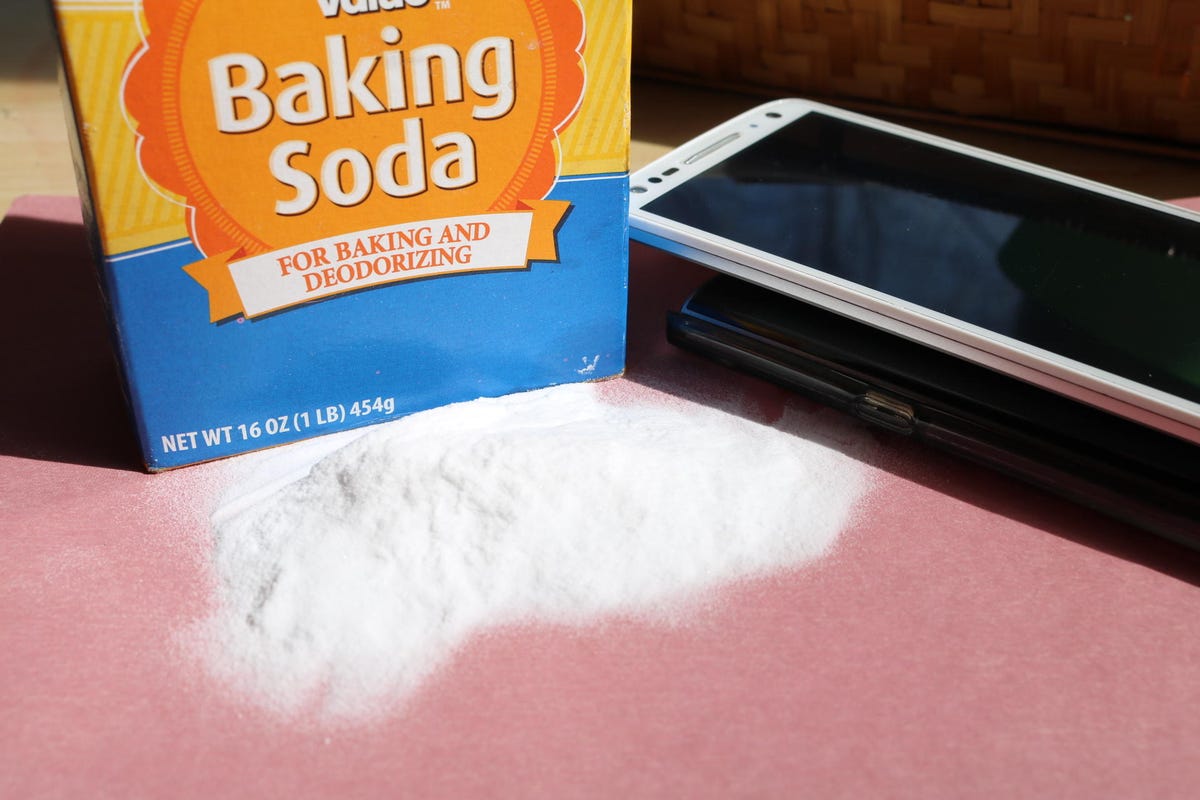Yes, You Should Deep Clean Your Silverware. Here’s How

Our forks and spoons are the most important gear in our kitchen to keep clean. What other piece of cookware goes directly into our mouths? (Repeatedly. Several times a day.) So, it raises the question: Just how clean are you getting your everyday silverware? Whether you have a dishwasher or employ regular handwashing, are you sure you’re actually getting all the debris from between the tines of the fork? What about individual rice grains, adhesive egg yolk or crusted-on sauce?
And what about mineral buildup, or rust on your silverware? While miniscule amounts of these elements are probably harmless, according to the US Department of Agriculture, rust is not considered food safe and it can flake off and be ingested, so why risk it?
At the very least it’s worth giving your silverware a little extra attention the next time you load the dishwasher or fill the sink with suds, and you may want to consider deep cleaning it every once in a while. I spoke to a cleaning expert, Toby Schulz, CEO and founder of Maid2Match, for his best advice on making sure you’re getting your everyday silverware as clean as it can be.
Hand washing is best

Let the deep cleaning begin.
It’s good news for those without access to a dishwasher. According to Schulz, hand washing produces the best results for clean silverware. “It’s better to hand wash your silverware if possible,” he said. “Using the dishwasher risks tarnishing the silverware and removing the patina, and you’ll have more control over the cleaning process as well.”
You’re more apt to pay attention to what might be clinging to your silverware when you wash it by hand, especially if you’re not in the habit of prerinsing when you load the dishwasher.

Here’s all the artillery you’ll need to get dirty silverware sparkling again.
For best hand-washing results, “remove visible food debris like dried sauce or stuck-on rice to prevent any build-up or risk of mold,” said Schulz. “Also, use soft-bristled tools or non-abrasive sponges, as abrasive cleaners such as scouring powder, can scratch or tarnish the finish.” Forks especially have the capacity to harbor bits in their numerous spaces, so make sure you’re being thorough but gentle when getting between the tines.
Soaking isn’t doing you any favors, either, and isn’t a useful substitute for proper handwashing. “You shouldn’t soak your silverware for a long time, as this risks rust,” said Schulz, which is probably not something you’re regularly inspecting for, especially in your forks’ smallest surfaces.
Dishwasher success

The trendy third rack provides another place to load silverware, kitchen utensils and other small items.
Perhaps you’re in the habit of throwing every kind of cookware, tableware and flatware in the dishwasher together with the same one-size-fits-all detergent and setting. If so, you may not be doing your silverware any favors when it comes to keeping it in clean and safe condition. (I may not have a dishwasher, but I am definitely doing this with laundry.)
“You can wash your everyday silverware in the dishwasher, but with some caveats,” said Schulz. He recommends the following best practices for optimizing your dishwasher cleaning cycle, to prevent tarnishing, wear, or mineral and rust build-up:
- Use an acid-free detergent, so no citric acid, and no citrus additives.
- Don’t wash silverware in the same load as stainless steel.
- Avoid washing silverware in the same cycle as any dishes or pans that may contain acidic food residue, such as tomato sauce.
- Always use a delicate cycle, or whichever the lightest setting on your dishwasher is. A high-temp cycle and a drying cycle could damage silverware.
- Always hand dry the silverware afterwards.
Drying and storing silverware

Dry your silverware well before putting it away.
This last point is probably the one that none of us are regularly doing — dishwasher users or hand washers both — but it’s an especially important one for keeping silverware in its best and cleanest condition.
“You should always dry your silverware immediately after washing to prevent water spots or mineral deposits from hard water,” said Schulz, no matter what method you use to clean it. “Store in a cool, dry place,” he said. “Improper storage can also lead to tarnish and a build-up of dust.” A dedicated silverware drawer is best. That’s bad news for those who enjoy the country charm of keeping your silverware in an open tin or crock on a countertop, but that risks the possibility of not only dust, but cooking grease and humidity also having its way with your silverware.
Occasional deep cleaning

Is there anything baking soda can’t clean?
For kitchen gear you regularly put directly in your mouth, you may want to consider occasionally deep cleaning, though if you follow the advice above, it’s less of a necessity. “If you regularly clean your silverware, there shouldn’t be a need for deep cleaning unless you notice a build-up of grime, or your silverware begins to oxidize or tarnish,” said Schulz. But for an added measure of security, deep cleaning your silverware is easy with basic kitchen tools and ingredients you probably already have on hand.
For a quick fix, “if your silverware has oxidized, you can sprinkle some baking soda on a cut lemon and scrub the pieces,” said Schulz. “Do not let the cleaning solution sit for more than 2 minutes. Wash thoroughly with soap and water, then dry,” he added. Water spots can also be removed with simple lemon juice or white vinegar, but again, it’s important to both rinse and dry.
For a more thorough deep clean, Schulz recommends the following procedure:
1. Start with a glass container lined with aluminum foil, or an aluminum baking sheet.
2. Sprinkle the bottom with a tablespoon each of baking soda and sea salt or kosher salt.
3. Slowly add half a cup of white vinegar, followed by a cup of freshly boiled water.
4. Layer the silverware into the container or pan, making sure they don’t overlap.
5. The pieces must touch the aluminum. Let them soak for approximately half a minute, then remove them with tongs.
6. Buff with a clean microfiber cloth afterward.
For even more kitchen cleaning tips, see the magic recipe for getting stubborn stains out of cookware and how to clean a scorched cast-iron skillet.





